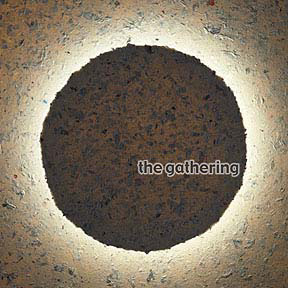 |
The Gatherings Concert Seriespresents aBasic Studio Recording Workshopwith Art CohenSaturday 11 June 2005 8:00pmSt. Mary's Hamilton VillagePhiladelphia, PA |
Art Cohen to Lead Recording Studio Workshop at The Gatherings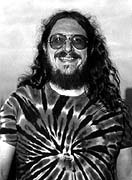 On Saturday 11 June 2005 at 8:00pm The Gatherings Concert Series will present a Basic Recording Studio Workshop at St. Mary's Hamilton Village. This workshop is open to anyone interested in learning more about the concepts upon which home recording is based. If you have ever listened to music and become curious about how the studio functions and is used to create music or are interested in starting up your own home studio, then this workshop is for you!
On Saturday 11 June 2005 at 8:00pm The Gatherings Concert Series will present a Basic Recording Studio Workshop at St. Mary's Hamilton Village. This workshop is open to anyone interested in learning more about the concepts upon which home recording is based. If you have ever listened to music and become curious about how the studio functions and is used to create music or are interested in starting up your own home studio, then this workshop is for you!
The Studio workshop at The Gatherings will be headed by veteran musician/engineer Art Cohen, a noted figure in the field of studio recording as well as in music performance with the Philadelphia-based Spacemusic duo The Ministry of Inside Things. | |
|
The primary educational goal of this workshop is to teach to the novice the creative operation of professional audio recording equipment. This workshop will cover the essentials a first-time recording engineer needs to know about setting up and operating a home or project recording studio. Concepts to be covered include: the microphone, mixing board, signal processing, monitor speakers, current popular recording devices and insight into how these components may be integrated to form a system with which to realize musical productions. ~
| |
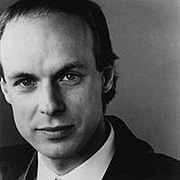 Recording Overview
Recording Overview
The first thing about recording is that it makes repeatable what was otherwise transient and ephemeral. Music, until about 1900, was an event that was perceived in a particular situation, and that disappeared when it was finished. There was no way of actually hearing that piece again, identically, and there was no way of knowing whether your perception was telling you it was different or whether it was different the second time you heard it. The piece disappeared when it was finished, so it was something that only existed in time. The effect of recording is that it takes music out of the time dimension and puts it in the space dimension. As soon as you do that, you're in a position of being able to listen again and again to a performance, to become familiar with details you most certainly had missed the first time through, and to become very fond of details that weren't intended by the composer or the musicians. The effect of this on the composer is that he can think in terms of supplying material that would actually be too subtle for a first listening. Around about the 1920s - or maybe that's too early, perhaps around the '30s - composers started thinking that their work was recordable, and they started making use of the special liberty of being recorded. Notes From The Studio as Compositional Tool by Brian Eno | |
Workshop Outline:
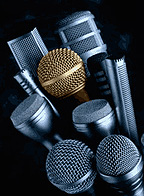
| |
Recommended Workshop Resources:(the following resource links, while not essential, could help provide background knowledge which would enable attendees to get more out of the Studio workshop)
The Gatherings Concert Series hosts the Studio Recording Workshop with Art Cohen on Saturday 11 June 2005 at 8:00pm (doors open at 7:30pm) in the parish hall of St. Mary's Hamilton Village 3916 Locust Walk (just east of 40th & Locust) on the Penn campus in West Philadelphia. Requested Donation: $5 - $10 at the door. All ages welcome. No previous knowledge of music or technology needed.
| |
For more about Art Cohen, please access the:
| |
The Gatherings Concert Series is presented by the all-volunteer staff of The Corporation for Innovative Music and Arts of Pennsylvania
| INDEX | ARCHIVES | SCRAPBOOK | NEWS | DIRECTIONS | MISSION | 2005 SEASON |

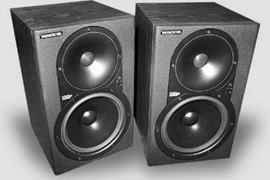
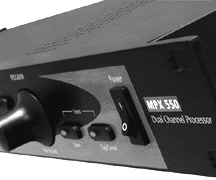
 Mixing Boards are used to combine sound sources (audio sources) into an output signal, usually stereo (2 channels, left and right). Mixing involves many things, the most important being the creation of a good balance of volume among each of the individual sources (instruments). Another important aspect of mixing is creating a sense of space, done by panning each musician/instrument to its appropriate location in the stereo field.
Mixing Boards are used to combine sound sources (audio sources) into an output signal, usually stereo (2 channels, left and right). Mixing involves many things, the most important being the creation of a good balance of volume among each of the individual sources (instruments). Another important aspect of mixing is creating a sense of space, done by panning each musician/instrument to its appropriate location in the stereo field.
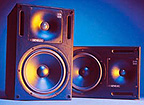 In many cases the control room of a small home studio is a converted bedroom. For the small control room, Near-Field Studio Monitor Speakers are recommended. Near-field monitors are mounted close to the listener, usually about 3 feet. They should be placed so that the monitors and listener create an equilateral triangle. Using good studio monitors will likely produce a mix which will sound good when played back on other common systems such as home stereos, boom boxes or car stereos.
In many cases the control room of a small home studio is a converted bedroom. For the small control room, Near-Field Studio Monitor Speakers are recommended. Near-field monitors are mounted close to the listener, usually about 3 feet. They should be placed so that the monitors and listener create an equilateral triangle. Using good studio monitors will likely produce a mix which will sound good when played back on other common systems such as home stereos, boom boxes or car stereos.
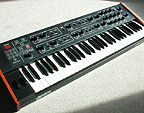 In 1983, several synthesizer manufacturers agreed on a communications protocol that would allow electronic music synthesizer keyboards to control each other. The Musical Instrument Digital Interface (MIDI) specification defines both the organization of the information transmitted and the circuitry used to connect systems together. MIDI was soon picked up for computer applications and today we have a mix and match situation, where (provided you have the proper software) any of several computers can be connected to one or more synthesizers. This interface has provided an impetus for the development of software, lowered the costs of computer assisted music and attracted many new musicians into the field.
In 1983, several synthesizer manufacturers agreed on a communications protocol that would allow electronic music synthesizer keyboards to control each other. The Musical Instrument Digital Interface (MIDI) specification defines both the organization of the information transmitted and the circuitry used to connect systems together. MIDI was soon picked up for computer applications and today we have a mix and match situation, where (provided you have the proper software) any of several computers can be connected to one or more synthesizers. This interface has provided an impetus for the development of software, lowered the costs of computer assisted music and attracted many new musicians into the field.
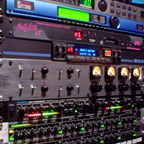 Delay is defined as the splitting of an audio signal into separate components, the slowing of one of these split signals and subsequent re-introduction into the original signal. Echo is defined as a delay in which the regenerations are evenly spaced and in which the release portion of the sound envelope is even as well. Reverb is defined as a delay in which the regenerations are randomly dispersed and in which the release portion of the sound envelope is random as well.
Delay is defined as the splitting of an audio signal into separate components, the slowing of one of these split signals and subsequent re-introduction into the original signal. Echo is defined as a delay in which the regenerations are evenly spaced and in which the release portion of the sound envelope is even as well. Reverb is defined as a delay in which the regenerations are randomly dispersed and in which the release portion of the sound envelope is random as well.
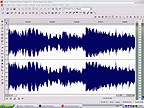 Several methods of Audio Recording exist. This section will cover magnetic tape, digital recording, multi-track recording as well as the respective various software and hardware used. This technology surrounds us and touches our lives. Even if you are not a home recorder, gaining insight into this process should be rewarding.
Several methods of Audio Recording exist. This section will cover magnetic tape, digital recording, multi-track recording as well as the respective various software and hardware used. This technology surrounds us and touches our lives. Even if you are not a home recorder, gaining insight into this process should be rewarding.
 Mastering is the last creative step before a recording project reaches completion. It encompasses all the final tuning before a project goes to press, including: transfer final stereo mixes to computer, sequence and edit the tracks, adjust levels and equalization and produce a final master for replication. The objective is to make the enduser's encounter with the media an enjoyable and seamless experience.
Mastering is the last creative step before a recording project reaches completion. It encompasses all the final tuning before a project goes to press, including: transfer final stereo mixes to computer, sequence and edit the tracks, adjust levels and equalization and produce a final master for replication. The objective is to make the enduser's encounter with the media an enjoyable and seamless experience.